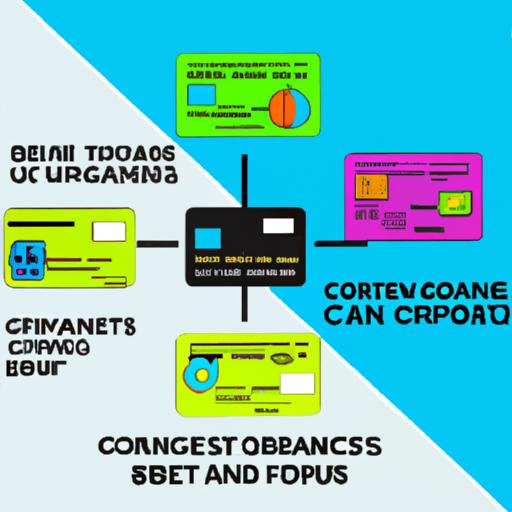Introduction
In the world of personal finance, credit card offers play a significant role in helping individuals manage their finances effectively. Among the various types of credit card offers available, balance transfer offers stand out as a valuable tool for those looking to consolidate their debts and save money on interest payments.
A. Overview of Credit Card Offers
Credit card offers come in a variety of forms, each tailored to meet different financial needs. From rewards cards to cashback offers, there is a credit card for every spending habit. However, one of the most sought-after offers is the balance transfer option, which allows cardholders to transfer balances from high-interest cards to lower or zero-interest cards.
B. Importance of Balance Transfer Offers
Balance transfer offers provide cardholders with the opportunity to save money on interest payments by consolidating multiple debts into one account with a lower interest rate. This can help individuals pay off their debts faster and more efficiently, ultimately improving their overall financial health. Additionally, balance transfers can also help individuals simplify their finances by managing all their debt in one place, making it easier to track and pay off.
Understanding Balance Transfer Offers
A. Definition of Balance Transfer
A balance transfer is a financial strategy that allows individuals to move their existing credit card debt from one card to another, typically with a lower interest rate. By transferring balances, individuals can save money on interest payments and potentially pay off their debts faster.
B. Benefits of Transferring Balances
Transferring balances can offer several benefits to cardholders. One of the primary advantages is the opportunity to save money on interest payments. By taking advantage of lower or zero-interest introductory periods, individuals can reduce the overall cost of their debt and allocate more funds towards paying off the principal balance.
C. How Balance Transfers Work
When initiating a balance transfer, individuals typically apply for a new credit card with a balance transfer offer. Once approved, they can request to transfer balances from their existing cards to the new card. The transferred balances will then be subject to the terms and conditions of the new card, including any introductory interest rates and transfer fees. It is essential to carefully review these terms to ensure that the balance transfer will be cost-effective and beneficial in the long run.
Factors to Consider Before Applying
A. Credit Score Requirements
When considering applying for a credit card offer with a balance transfer option, one of the crucial factors to take into account is the credit score requirements. Credit card issuers typically have specific credit score thresholds that applicants must meet to qualify for the offer. A higher credit score not only increases the chances of approval but also may lead to more favorable terms, such as lower interest rates and higher credit limits.
B. Transfer Fees and APR
Another essential factor to consider before applying for a balance transfer offer is the transfer fees and Annual Percentage Rate (APR) associated with the card. While some balance transfer offers come with low or even zero introductory APRs, they may also include transfer fees that can offset the savings. It’s important to carefully review the terms and conditions of the offer to understand the total cost of transferring balances.
C. Introductory Period Length
The introductory period length of a balance transfer offer is a significant consideration when evaluating credit card options. The length of the introductory period determines how long cardholders have to pay off their transferred balances at a lower or zero interest rate. A longer introductory period provides more time for individuals to make payments without incurring additional interest charges, making it easier to manage and pay off their debts effectively.
Tips for Maximizing Balance Transfer Offers
A. Paying off the Balance within the Introductory Period
When taking advantage of a balance transfer offer, it is crucial to create a repayment plan that enables you to pay off the transferred balance within the introductory period. By doing so, you can avoid accruing additional interest charges and make the most of the lower or zero-interest rate provided by the offer. Setting a budget and allocating funds specifically towards paying off the balance can help you achieve this goal.
B. Avoiding New Purchases on the Card
To fully benefit from a balance transfer offer, it is advisable to refrain from making new purchases on the card where the balance was transferred. New purchases typically come with higher interest rates and can hinder your progress in paying off the transferred balance. By focusing solely on clearing the existing debt, you can expedite the repayment process and avoid accumulating more debt in the process.
C. Monitoring Credit Utilization
As you work towards paying off the balance transferred to a new card, it is essential to keep track of your credit utilization ratio. Maintaining a low credit utilization ratio, which is the percentage of your available credit that you are using, can positively impact your credit score. By being mindful of your credit utilization and keeping it low, you can improve your creditworthiness and financial standing in the long run.
Conclusion
As we wrap up our exploration of credit card offers for balance transfers, it’s clear that these offers can be a valuable tool for individuals looking to take control of their finances and save money on interest payments. By understanding the benefits of balance transfers and carefully considering the factors involved, you can make informed decisions when selecting the right credit card offer for your needs.
In conclusion, balance transfer offers provide a strategic way to consolidate debts, simplify finances, and ultimately improve your financial well-being. Remember to always pay attention to the terms and conditions of each offer, compare different options, and make sure to take advantage of the introductory periods to maximize your savings. With the right approach and a bit of financial discipline, you can make the most out of credit card offers for balance transfers and work towards a more secure financial future.

